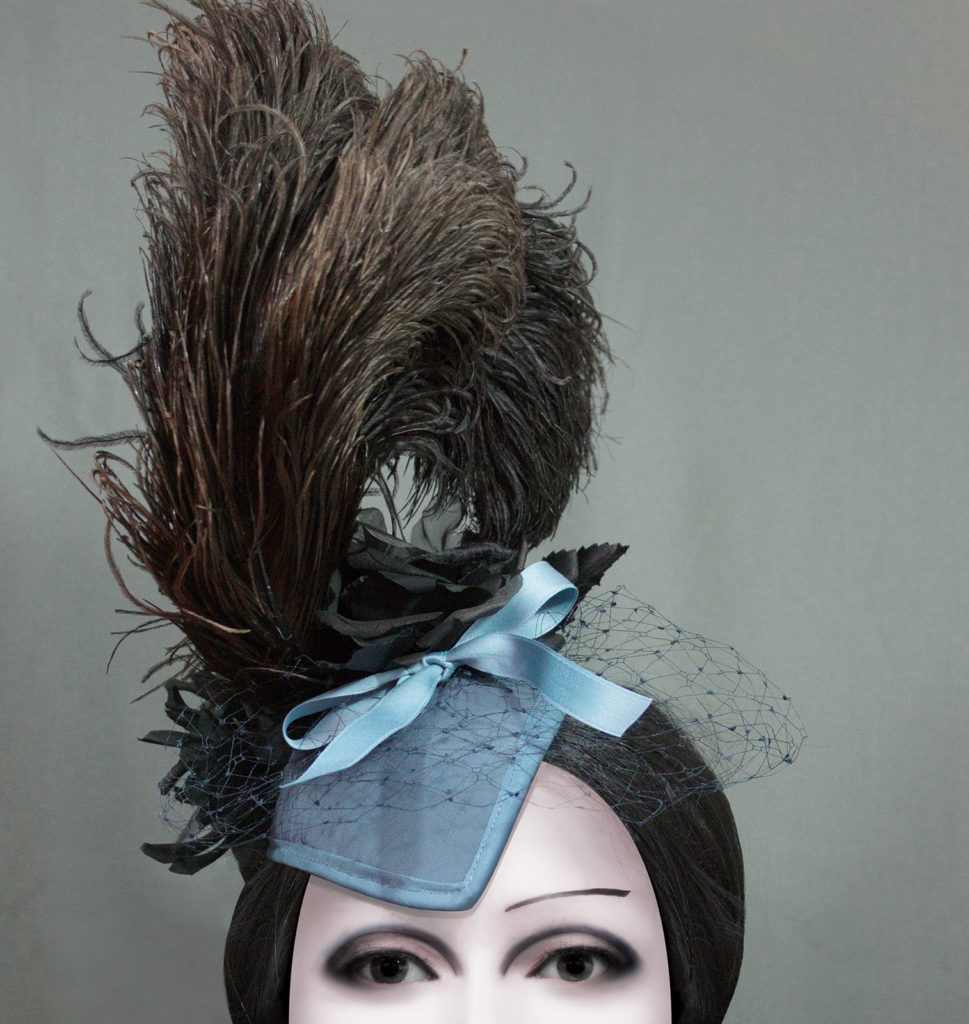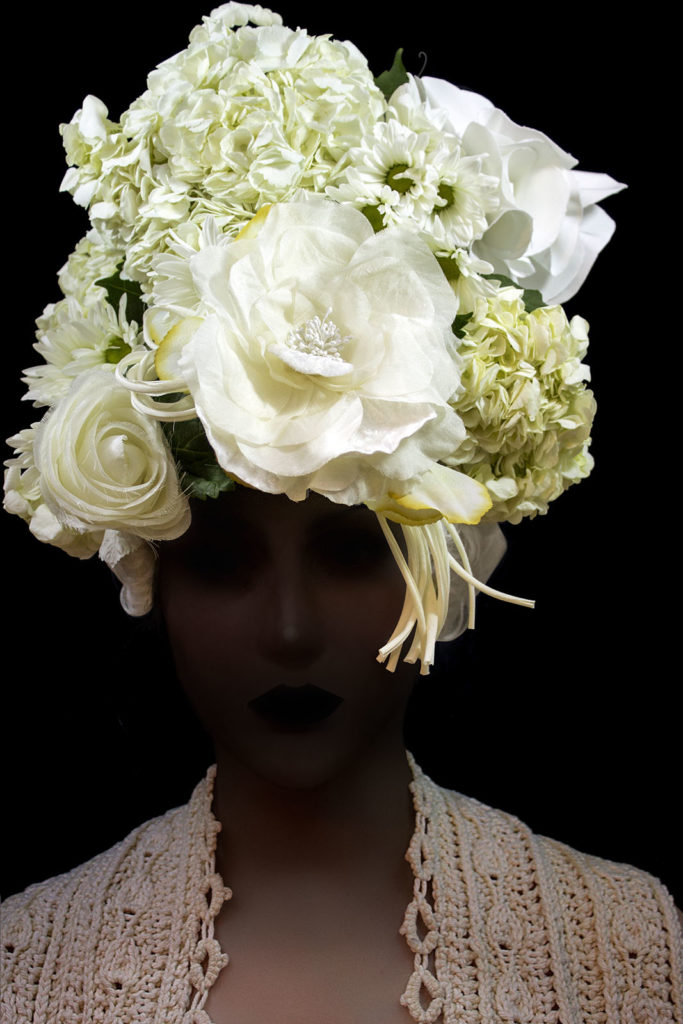A multidisciplinary artist, Francesca Penchant stretches the boundaries of visual art by embracing and celebrating differences. Whether working in surface design, wearable art, photography or film, she finds joy in growing her artistic vision and helping other artists do the same.

I’ve seen “In the Heights” and should know better, but I had to look up “Nuyorican.” Tell us what that means to you and how your multi-cultural background influences your art.
My mother was born in 1934 in New York City to Puerto Rican parents, went to Stanford and became a teacher in the 1950s, and then met my father, who was white, in Berkeley in the 1960s. She has a lot of charisma and is like a force of nature. I was almost in awe of her growing up. So I grew up seeing women as powerful, seeing women of color as powerful and seeing the power that only women have.

We moved to the Seattle area in 1976. Growing up in a white suburb, my mother was the only Hispanic/Latina person there, and meeting other mixed race/ethnicity people was rare – so I hungered to see people who were different. So, presenting people who are different is something I want to do in the portraits I make.
What are your earliest memories involving your own creative expression?
As an Amazon Associate I earn from qualifying purchases. Read more about our affiliate linking policy.

When I was 9, I made an outrageous four-foot witch doll for a Halloween contest at school. She had a magenta bikini, fabric high heels and a red wig for hair. My mother and I stayed up late making her out of old stockings, magenta felt and gold sequins. But I didn’t realize that the doll would create such a sensation – my teacher hated her! So she lectured the class about how demeaning and indecent my doll was. Even though the witch was fabulous, she only received one vote, of course – mine. After school, I cried all the way home. It was an unfortunate creative experience, but what I take away from it is that my mother supported me afterward. She didn’t try to make me conform. That was a formative experience.

When I was 10, I was at a bookstore with my dad and I found Diane Arbus: An Aperture Monograph, and asked him to buy it for me. I spent a lot of time looking at those portraits of people who were different. They really resonated with me. They told me that there was a world of weirdos out there that was very different from our little suburb.
Then in college, I discovered Decadent writers, a group of 1890s European writers outside the naturalist mainstream – Lorrain, Huysmans, Rachilde, Verlaine, Mirbeau and others. Their style influenced mine – it is dark, excessive, artistic and rebellious.
As a creative individual, do you believe that you perceive the world differently from other people? Do you think that any unique thought processes are involved when you create something?
As an artist, you provide a window on the world and your audience wants to see through that window. My window is very dark. I get depressed when I can’t be creative, so I hold onto creativity as if my life depended on it. But that’s why darkness resonates with me. I feel comfortable with darkness. I identify with it. So, how I see the world, darkness, depression, creativity and survival are all tied together.


If you had the opportunity, what creative person (living or dead) would you like to work with?
There are a lot of artists from the past who really speak to me. For example, Rachilde (1860-1953) is an inspiration to me. She was a daring, avant-garde writer, yet she was a respectable bourgeois who married the editor of the Mercure de France. So, she had the best of both worlds: she published scandalous novels, but she didn’t die in a garret or madhouse, like some Decadent writers. She lived to be 93. She played by society’s rules.
Gustave Flaubert said, “Be regular and orderly in your life, so that you may be violent and original in your work.” I like that. Things like structure and habits and a schedule and security and sanity help artists be more creative – they form a safe container in which they can take creative risks.

What inspires you?
All kinds of artists and creative people inspire me.
The story of Ana Mendieta is one that I’m inspired to tell people about. She was a Cuban American multidisciplinary artist best known for her “earth-body” artwork. In 1985, she was killed at 36 by her husband, the minimalist artist Carl Andre in New York, although he was acquitted. They’d been drinking, and were arguing about who was more successful, then he pushed her out of their apartment window. So feminists protest his art shows to this day. Besides the fact that the case was a travesty of justice, I’m interested in her story on a personal level. She was a woman of color defending her artwork to a white man. These were fatal circumstances for her. I want people to know that she existed.


Are there recurring themes in your work?
There’s a set of lectures by Arnold Weinstein about the art of the city that made me want to write a novel about the city, which I started in 2016. Many of the themes he discusses – history, wayfinding, anonymity, alienation, disease, mechanization, commerce and cultural mixing – show up in my work. They’re ideas that I have strong opinions about, that I like to explore, move around in and think about.
How do you make the leap from the idea in your head to the work you produce?
The initial idea is much different from the resulting work, because I use an improvisational approach which, for me, is a process of play and exploration and mistake-making. (See the book Free Play for more about improvisation.) Planning, testing and documenting like a scientist dry up my enthusiasm. But a more organic approach – learning, thinking of a new idea, growing one thing from another – is an exciting, infinite process that I love.

I’m a very messy creative. I make a mess, and then clean it up and make it presentable. I explore the project that I’m most enthusiastic about without worrying about how it fits with previous projects. No matter what the medium – in fiber art, in photography, in graphic design, in creative writing, in film – the process is the same. First there is the research – soaking up what others have done. Then, there is the experimentation – which is like a pool to dive into and play around in and follow intuition in.
When experimenting, it is better to have a mastery of the craft, because then technical difficulties won’t hinder the process, and experimentation can be seamless. Next, there is the editing and polishing and revising. I like to be ruthless in editing, to “kill my darlings,” and remove the things that aren’t working, no matter how dear they are to me. In design school, I learned through critiques not to be so attached to the work.
What plays in the background while you work? Silence? Music, audiobooks, movies? What kind?
For most of the photo portraits, I watched old movies to set a mood. For some, I watched Japanese samurai and ghost-story movies from the 1950s and 1960s. Those films are so visually striking that I wanted to digest their aesthetic by watching them over and over. I watched Gate of Hell (1953), Ugetsu (1953), Harakiri (1962), Kwaidan (1964), Onibaba (1964), The Sword of Doom (1966) and Kuroneko (1968).




What are you working on now?
I’m working on a collage film that I plan to show during Halloween, and in a possible collaboration with a friend, the musician Christian Pincock. Under the fair-use copyright law, I can record small samples of classic films and then transform them into a new film. The film I am making is silent, so I’ve been watching films with the sound off, which is a different experience. Watching movies without sound creates a new awareness of the visual techniques and the visual vocabulary of film. Film uses faces, expressions, gestures, actions, cropping and editing to communicate.

What’s next for you?
More and more, I want to serve artists. Meeting and helping other artists is one of my favorite things to do. I’m a Washington rep for the Surface Design Association, which has about 160 members in Washington state – all different kinds of fiber artists. I manage our social media:
Surface Design Association-Washington
Website: https://surfacedesignwa.com/
Instagram: https://www.instagram.com/sdawashington/
Facebook: https://www.facebook.com/surfacedesignwa/
Twitter: https://twitter.com/SurfaceDesignWA
Also, last year I worked as a graphic designer for Artist Trust, which gave me an overview of artists in Washington state. I’m always meeting new artists through Artist Trust events and classes.
I’ve led a couple artist’s groups, which I want to continue. We used Artistsu.org’s free framework – called “working groups” – which includes a book called Making Your Life As An Artist, a workbook, and a curriculum. Working groups create a structure to help artists support each other. Artists aren’t broken, and they don’t need fixing, but too many artists are struggling, even though they are the magicians of our society. They are the ones who create magic and delight and understanding, which is why I love them.

Where can people see your work?
People can see my work on social media.
Website: http://www.francescapenchant.com/
Instagram: https://www.instagram.com/francescapenchant/
Twitter: https://twitter.com/francescacity
Blog: https://francescapenchant.wordpress.com/
Facebook: https://www.facebook.com/francesca.penchant
Pinterest: https://www.pinterest.com/francescacity/
YouTube: https://www.youtube.com/channel/UCRInpiZ0d_jDnlVTqI1Vm7Q
Interview published July 31, 2018.
Browse through more Spotlight interviews on Create Whimsy.

